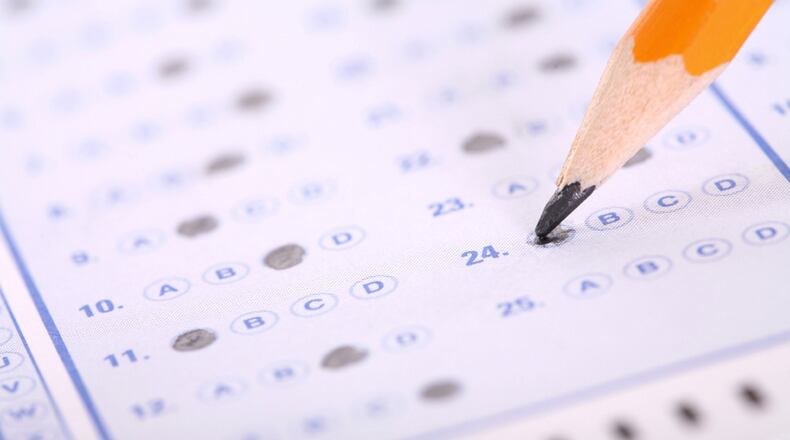In changes announced this month, high school students will be allowed to retake individual sections of the ACT college admissions test rather than having to sit again for the entire three-hour test in an effort to raise their scores.
The new ACT policies go into effect next fall. Colleges that require standardized admissions tests accept either the ACT or the SAT. These changes are likely designed to make the ACT more attractive to test-takers.
The ACT has made few major changes to its college entrance test in its 60-year history. In 2005, an optional writing section was added. So, it’s a significant shift that students who have already taken the exam will be allowed to sign up to take an individual section at a prorated fee.
Each section — English, math, reading, science and/or writing — earns a scaled score between 1 and 36 that contributes to a composite score, also scaled to 36. Now, for example, a student who did well on every section but math will be able to register to retake only math starting in September of 2020.
In some testing centers, students will be able to choose between digital or paper versions of the ACT. The online version will produce results in two days, compared to two weeks or more for the paper-and-pencil version. The test is now administered only on paper on national test dates.
In another change, the ACT itself will calculate and send colleges “superscores,” which combine a student’s highest scores across all testing dates. Many colleges already superscore, but now the ACT will automatically calculate a student’s highest possible ACT composite score based on all their results.
“With these changes, ACT is evolving to meet students in the digital world in which they live. We want to do a better job of helping them succeed,” said Suzana Delanghe, ACT chief commercial officer, in a statement.
“First, allowing students to retake individual test sections, rather than retaking a three-hour test, will enable them to focus their energy and study efforts accordingly to improve sectional performance. Second, putting the ability to superscore, or aggregate the best section scores from all tests taken, into the hands of the test taker allows students to present schools with their best test performance,” said Sam Pritchard, director of college prep programs for Kaplan Test Prep.
“Finally, the shift to digital provides more immediate reporting, which can give students more flexibility,” Pritchard said. “Instead of waiting for the 2-8 weeks it can typically take for score reports to arrive, test takers can expect to receive their scores within two days, which gives them additional time to study or decide if they want to retake the exam.”
Not everyone applauded the changes to the ACT.
Robert Schaeffer, public education director of FairTest, said, “Clear winners here are the testing companies — ACT, in this case — and the test-prep industry, which will face even more demand from already advantaged families to figure out how to maximize their reported scores. Losers are kids from historically disadvantaged backgrounds whose scores will fall further behind because they will not know how to ‘game’ the new system and many school counselors/test supervisors who will have to spend more poorly-paid time administering a confusing set of options.”
About the Author
Keep Reading
The Latest
Featured



